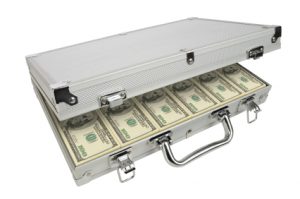 When doing a lifestyle analysis for a divorce or child support case and evaluating historical spending, we sometimes run into unusual expenses that may be considered one-time (or non-recurring). What do we do with these?
When doing a lifestyle analysis for a divorce or child support case and evaluating historical spending, we sometimes run into unusual expenses that may be considered one-time (or non-recurring). What do we do with these?
Expenses that are not expected to recur should be excluded from the marital lifestyle. The rationale is simple: If an item will not recur, either due to the end of the marriage or some other relevant factor, it is not part of the lifestyle that must be funded post-divorce.
Examples of items that should be excluded from the marital lifestyle could include:
- Large spousal gifts such as jewelry – The spouses will presumably not give one another gifts after the marriage ends, so this is not part of the post-divorce lifestyle.
- Anniversary trips or parties – Because the marriage is ending, any expenditures related to the anniversary of the spouses should be excluded from the lifestyle.
- Funding for extended family – The partial or full support of extended family members may need to be excluded from lifestyle. For example, suppose the married couple pay the medical expenses of the wife’s parents for a period of ten years during the marriage. The court may be reluctant to force this support to continue, so these expenses might be excluded from the calculation of the standard of living.
There are many expenditures that could fall into this gray area, and they will have to be evaluated individually. What may be considered non-recurring for one couple may be recurring for another couple.
Certain capital expenditures made by the family may need to be removed from the calculation of the standard of living. For example, if the family purchased household furnishings and the spouse is entitled to a share of that furniture, then funds might not be allocated for furniture when calculating the standard of living. To allocate funds for furniture in this case may double count the item. However, funds may needed to be budgeted for future replacement of that furniture.
Purchases of larger items such as automobiles, boats, and residences may also need to be adjusted when calculated standard of living. For example, it may be necessary to determine how long (on average) the family used a vehicle before replacing it, and that information may be used to adjust lifestyle analysis to reflect “normal” expenditures for vehicles.



